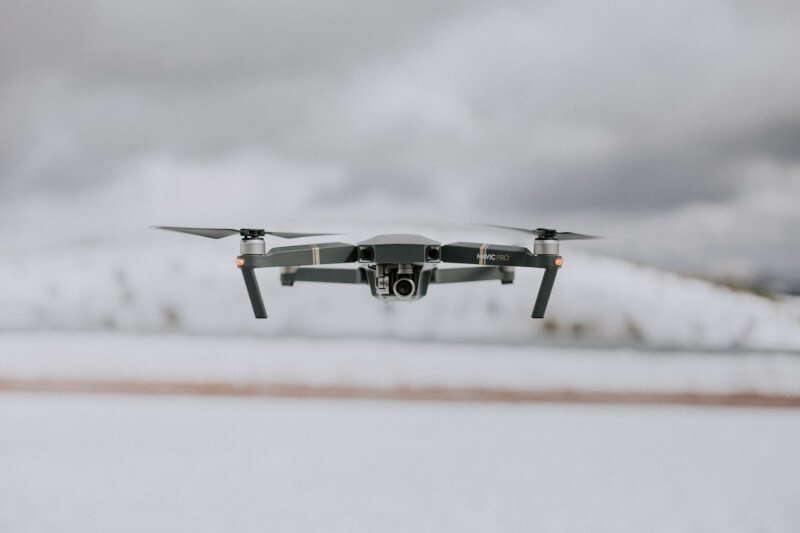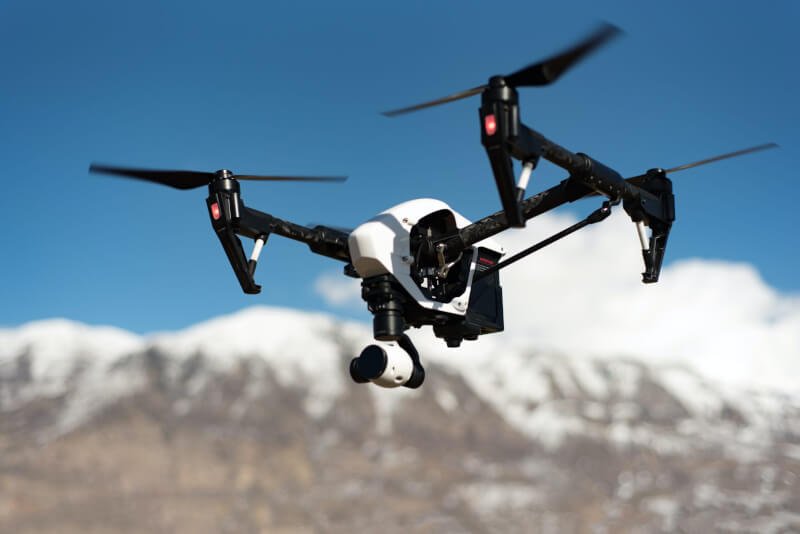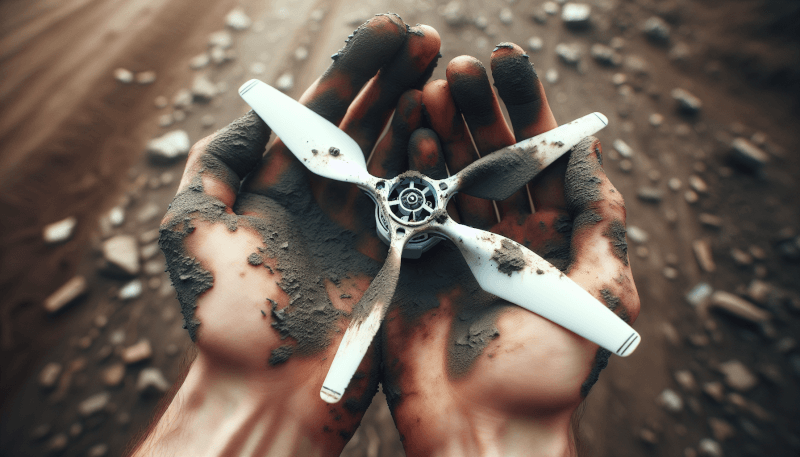In this friendly guide, you will learn everything you need to know about maintaining your drone like a pro. From basic cleaning and battery care to troubleshooting common issues, this article has got you covered. Whether you’re a novice drone owner or looking to brush up on your maintenance skills, this beginner’s guide will ensure your drone stays in top condition for countless flights of fun and adventure. So, grab your drone and let’s dive into the world of drone maintenance together!

Drone Care
Proper Storage
When it comes to maintaining your drone, proper storage is crucial. You should always store your drone in a cool and dry place, preferably in a protective case or bag. This will help prevent any dust or moisture from getting into the delicate components of the drone. Additionally, make sure to remove the propellers before storing the drone to avoid any potential damage.
Cleaning
Regular cleaning of your drone is essential to keep it in top condition. Use a soft, lint-free cloth to wipe down the exterior of the drone and remove any dirt or debris. For more stubborn stains, you can use a mild cleaning solution, but be careful not to get any liquids into the sensitive areas of the drone. Pay special attention to cleaning the camera lens, as any smudges or dirt can affect the quality of your aerial footage.
Transportation Tips
When transporting your drone, it’s important to secure it properly to prevent any damage. Make use of a sturdy drone backpack or hard case designed specifically for drones, as they provide adequate protection during transportation. Remove the propellers or secure them with blade guards to avoid any accidents. Additionally, it’s advisable to detach the drone’s battery and store it separately to prevent any potential damage.
Battery Maintenance
Charging
Proper battery charging is crucial for the longevity and performance of your drone. Always use the charger provided by the manufacturer and avoid using third-party chargers, as they may not be compatible or safe for your specific drone model. Follow the instructions regarding the charging time and never leave the battery unattended while charging.
Storage
When storing your drone batteries, it’s important to keep them in a cool and dry place. Avoid exposing them to extreme temperatures or direct sunlight, as it can shorten their lifespan. If you won’t be using your drone for an extended period, it’s advisable to store the batteries partially discharged, around 50%. This helps prevent over-discharge or bloating of the batteries.
Battery Testing
Regularly testing the health of your drone batteries is essential to ensure safe and reliable flights. Most drones come with battery management software that allows you to monitor the health and performance of your batteries. Check the battery voltage and capacity to ensure they meet the manufacturer’s specifications. If you notice a significant decrease in performance or capacity, it may be time to consider replacing the battery.
Propeller Care
Inspecting for Damage
Before and after each flight, it’s important to inspect your drone’s propellers for any signs of damage. Look for cracks, chips, or any deformities that could affect the performance of the propellers. If you notice any damage, replace the propellers immediately to avoid any potential accidents during flight.
Balancing
Properly balanced propellers are crucial for smooth and stable flights. Imbalanced propellers can cause the drone to vibrate excessively and affect its overall performance. To balance the propellers, you can use a propeller balancer or simply place them on a flat surface and observe if they wobble. If you notice any imbalance, gently file down the heavier side until the propeller is perfectly balanced.
Replacing
Propellers are considered consumable parts and will eventually wear out over time. It’s important to regularly check the condition of your propellers and replace them if you notice any signs of wear and tear. Flying with damaged or worn-out propellers can significantly impact the stability and control of your drone.
Camera and Gimbal Maintenance
Lens Cleaning
Capturing stunning aerial footage requires a clean lens. To maintain the quality of your drone’s camera, regularly clean the lens using a microfiber cloth or a lens cleaning solution. Avoid using harsh chemicals or abrasive materials that could scratch the lens. Gentle circular motions will help remove any smudges or fingerprints and ensure crystal-clear imagery.
Gimbal Calibration
The gimbal is responsible for stabilizing the camera during flight, ensuring smooth and steady footage. To maintain its optimal performance, it’s important to calibrate the gimbal regularly. Refer to your drone’s user manual for specific instructions on how to calibrate the gimbal. Typically, the process involves accessing the drone’s settings and following a series of prompts. Keep in mind that a calibrated gimbal is essential for capturing professional-grade footage.
Protective Cover Usage
When not in use, it’s advisable to use a protective cover for your drone’s camera and gimbal. This will help prevent any small particles or dust from accumulating on the lens or interfering with the gimbal’s movement. You can find protective covers specifically designed for different drone models, ensuring a perfect fit and maximum protection.

Controller Maintenance
Cleaning
The controller is the command center of your drone, allowing you to control its movements and capture breathtaking shots. Keeping the controller clean is crucial for its functionality. Use a soft cloth or a gentle cleaning solution to wipe down the controller’s exterior, making sure to remove any dirt or grime. Pay attention to the buttons and control sticks, as dirt or debris can affect their responsiveness.
Firmware Updates
Regular firmware updates for your drone’s controller are essential to ensure optimal performance and compatibility with the latest features. Check the manufacturer’s website or the drone’s mobile app for available updates. Before updating, make sure the controller is fully charged, and follow the instructions provided by the manufacturer to ensure a successful update.
Thumbstick Calibration
The thumbsticks on your drone’s controller are responsible for precise control and maneuvering during flight. Over time, they may lose their calibration, leading to less accurate control inputs. Most controllers have built-in calibration options that allow you to recalibrate the thumbsticks. Refer to your drone’s user manual for instructions on how to calibrate the thumbsticks properly.
Drone Software Updates
Importance
Regular software updates for your drone are crucial for improved performance, stability, and added features. Manufacturers constantly release firmware updates to address bugs, enhance flight capabilities, and improve safety features. Keeping your drone’s software up to date ensures you have access to the latest advancements and optimizations.
Updating Firmware
To update your drone’s firmware, check the manufacturer’s website or the drone’s mobile app for available updates. Before starting the update process, make sure your drone’s battery is fully charged, and follow the instructions provided by the manufacturer. During the update, ensure a stable internet connection and avoid interrupting the process to prevent any potential issues.
Updating Flight Controller Software
In addition to firmware updates, it’s important to regularly update the flight controller software. The flight controller is the brain of the drone, responsible for processing flight data and maintaining stability. Check the manufacturer’s website or the drone’s mobile app for available flight controller software updates. Follow the provided instructions to ensure a successful update and improved flight performance.

Safety Checks
Visual Inspection
Before each flight, it’s important to conduct a visual inspection of your drone. Check for any signs of physical damage, loose screws, or loose wiring. Make sure the propellers are securely attached and in good condition. Inspect the battery for any signs of bloating or damage. A thorough visual inspection ensures that your drone is in proper working condition and safe to fly.
Pre-flight Checklist
Creating and following a pre-flight checklist is essential for safe and successful drone flights. Your checklist should include tasks such as checking the battery level, verifying the controller’s signal strength, ensuring the GPS lock, and inspecting the surroundings for any potential obstacles. By following a pre-flight checklist, you can minimize the risk of accidents and ensure a smooth flight experience.
IMU Calibration
The Inertial Measurement Unit (IMU) is responsible for measuring the drone’s orientation and stability. Regular IMU calibration is important to ensure accurate flight data and stable flight performance. Refer to your drone’s user manual for specific instructions on how to calibrate the IMU. Typically, the process involves accessing the drone’s settings, placing it on a flat surface, and following the prompts.
Troubleshooting
Common Issues
Even with proper maintenance, drones may encounter common issues from time to time. Some of the common issues include GPS signal loss, connection problems, and calibration errors. Refer to your drone’s user manual for troubleshooting guides or consult the manufacturer’s support resources online. Most issues can be resolved by following step-by-step instructions provided by the manufacturer.
Flight Log Analysis
Flight logs are valuable sources of information that can help identify and address any issues with your drone. Many drones have flight log capabilities that record data such as flight time, altitude, speed, and power consumption. Analyzing the flight logs can provide insights into any anomalies or issues experienced during a flight. There are online tools and software available that can help you interpret and analyze the flight log data.
Contacting Customer Support
In some cases, troubleshooting and resolving an issue may require contacting the drone manufacturer’s customer support. If you have followed the troubleshooting steps provided by the manufacturer and are still experiencing issues, reach out to their customer support for further assistance. Be prepared to provide detailed information about the problem and any steps you have already taken to address it.

Weather Considerations
Flying in Windy Conditions
Flying a drone in windy conditions requires extra caution and skill. Strong winds can affect the stability and control of your drone, potentially leading to accidents or crashes. Before flying, check the weather forecast and avoid flying in gusty conditions or high wind speeds. If you must fly in mild winds, keep the drone close and lower to the ground to maintain better control.
Temperature Effects
Extreme temperatures can have an impact on drone performance and battery life. In cold weather, drone batteries tend to drain faster, and components may become less responsive. In hot weather, overheating can cause the drone to shut down or limit flight capabilities. It’s important to check your drone’s specifications and follow the manufacturer’s recommendations regarding temperature limits for safe and optimal performance.
Humidity and Moisture
Humidity and moisture can damage your drone’s sensitive electronics. Avoid flying in rainy or foggy conditions as water can damage the motors, circuit boards, and other internal components. If your drone gets wet, immediately dry it thoroughly before powering it on. Additionally, when storing your drone, ensure it is completely dry to prevent the growth of mold or corrosion.
Drone Insurance
Benefits of Insurance
Drone insurance provides peace of mind and financial protection in case of accidents or damage to your drone. Accidents can happen, and having insurance coverage ensures that you are not left with a heavy financial burden. Depending on the coverage, drone insurance can protect against damage, theft, liability, and even personal injury. It’s advisable to consider insurance, especially if you plan on using your drone for commercial purposes.
Choosing the Right Coverage
When selecting a drone insurance policy, it’s important to carefully review the coverage options and terms. Consider factors such as coverage limits, deductibles, liability protection, and whether the policy covers loss or theft. Some policies may also offer additional protection for equipment breakdowns or damage during transit. Compare different insurance providers and policies to find the coverage that best suits your needs and budget.
Understanding Policy Exclusions
Insurance policies often come with exclusions, which are specific instances or circumstances that are not covered by the policy. It’s important to thoroughly read and understand the policy exclusions before purchasing insurance for your drone. Common exclusions may include intentional damage, illegal activities, and flying in restricted airspace. Understanding the policy exclusions helps you make informed decisions and ensures there are no surprises when making a claim.
In conclusion, proper maintenance and care are essential for keeping your drone in good condition and ensuring safe and enjoyable flights. From storing your drone correctly to regularly inspecting and maintaining its components, following these maintenance practices will help you get the most out of your drone and prolong its lifespan. Remember to always prioritize safety by conducting pre-flight checks, staying up to date with firmware updates, and understanding the impact of weather conditions on your drone’s performance. With the right care and attention, your drone will continue to provide you with incredible aerial adventures for years to come.



